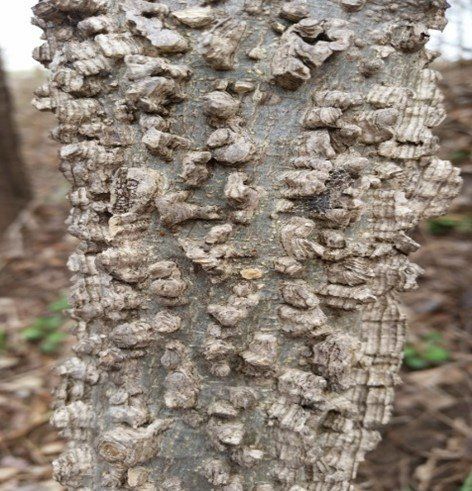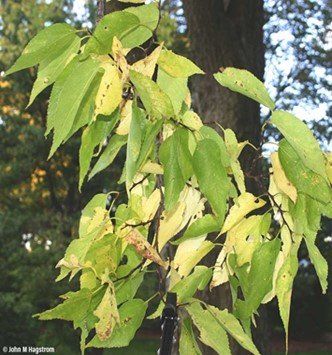The Hackberry Tree
Norfolk Master Gardeners have been busy planting trees from the city’s recent Arbor Day Tree give-away at Weyanoke Wildlife Sanctuary. The Arbor Day tree species were Sweet Bay Magnolia, Bald Cypress, River Birch, Persimmon, and Long Leaf Pines. These native trees were three years old and will grow up to 10 – 14 feet within the next five years. As natives, they support many species of birds and butterflies. The one tree that was not included, even though it is a native, was the Common Hackberry.
These photos show hackberry bark, leaves and fruit
Hackberry, or Celtis occidentalis, is easy to grow, tolerates a wide variety of conditions in an urban area, and has small orange fruits (called a drupe) which are a good source of food for winter birds. In fact, the Arbor Day Foundation calls the hackberry “one tough tree.” There is always a “however.” However, in Weyanoke Sanctuary there are hundreds (probably thousands) of hackberry seedlings as well as larger trees. If these saplings grew, the Sanctuary would be called hackberry heaven, as they would crowd out other species. To keep this from happening, NMGs will remove the seedlings to ensure a more diverse woodland.
You can always tell a hackberry, even in winter, by identification of its bark. The key feature is its warty surface that develops early and increases in size and number as it ages. The fruit of the hackberry is popular with winter birds, especially the cedar waxwing, mockingbird, and robin. The tree also attracts many butterfly species and is host plant for the caterpillars of the American Snout, Hackberry Emperor, Mourning Cloak, Tawny Emperor, Question Mark and Comma butterflies.




